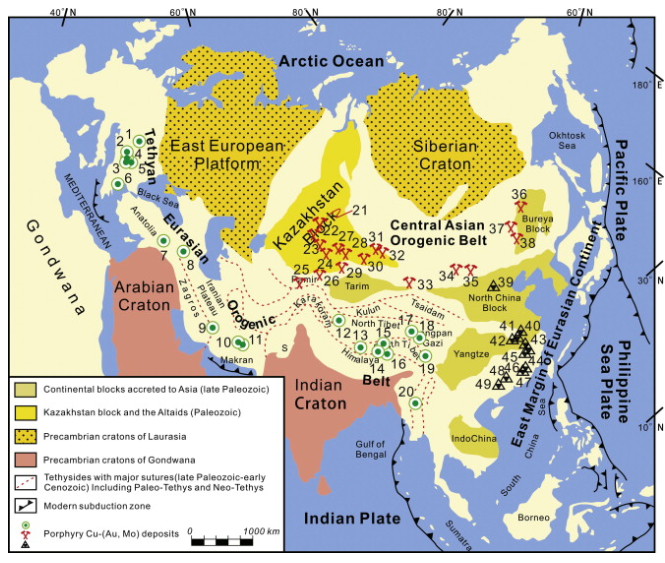


Eurasia boasts three colossal metallogenic belts of copper-molybdenum porphyry deposits: the northern Paleozoic Central Asian metallogenic belt, the southwestern Jurassic to Cenozoic Tethyan Eurasian metallogenic belt, and the eastern Jurassic to Cretaceous eastern margin of Eurasia metallogenic belt. The latter is considered to be part of the extensive Circum-Pacific metallogenic belt. This paper delineates some of the primary characteristics concerning the spatiotemporal distribution of copper-molybdenum porphyry systems and the associated geodynamic processes within these three metallogenic belts. Particular emphasis is placed on the pivotal role of post-subduction-related porphyry ore systems, encompassing collision and post-collision copper-molybdenum porphyry deposits throughout the geological history of Eurasia. The recurrent features of these ore systems and their associated felsic rocks stem from the partial melting of stagnant or remnant oceanic plates, followed by mixing with varying amounts of crustal materials during the ascent of magma to shallower levels.